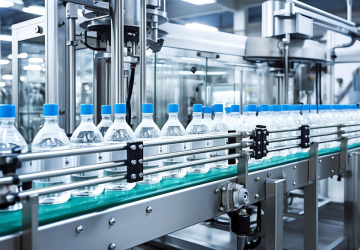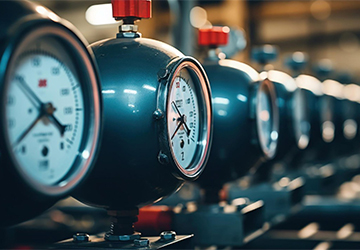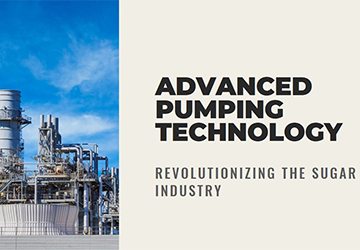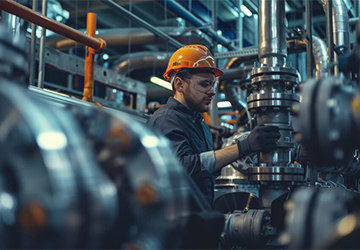A Comprehensive Guide to Pump Selection for Food Processing
As one of the leading and trusted pump manufacturers worldwide, we understand the critical role that food processing pumps play in ensuring efficient and safe production processes. Choosing the right pump for your needs is crucial to maintaining product quality, minimizing downtime, and maximizing productivity. In this comprehensive guide, we will discuss the key factors that you should consider when selecting a food processing pump, the different types of pumps available, maintenance and safety considerations, as well as future trends in the industry. Factors to consider when choosing a food processing pump a. Flow rate The flow rate of a food processing pump determines the volume of liquid it can handle within a given time frame. It is essential to consider the flow rate requirements of your production process to ensure that the pump can handle the required capacity. Factors such as the size of your operation, the viscosity of the liquid being pumped, and the desired processing speed should be taken into account when determining the appropriate flow rate for your pump. b. Pressure The pressure rating of a food processing pump is a crucial factor to consider, as it determines the pump’s ability to overcome resistance and deliver the liquid at the required pressure. It is important to match the pump’s pressure rating to the requirements of your production process. Factors such as the distance the liquid needs to be pumped, the height it needs to be lifted, and the pressure required for specific tasks, such as homogenization or bottling, should be considered when selecting a pump with the appropriate pressure rating. c. Viscosity The viscosity of the liquid being pumped is another important consideration when choosing a food processing pump. Viscosity refers to the thickness or resistance to the flow of a liquid. Different types of food products have varying viscosities, ranging from thin liquids, such as juices, to thick pastes, such as sauces. It is crucial to select a pump that is capable of handling the viscosity of your specific product without causing damage or compromising efficiency. d. Temperature The temperature of the liquid being pumped is a critical factor to consider, as it can impact the performance and longevity of the pump. Some food products, such as dairy or chocolate, require pumping at elevated temperatures, while others, like fresh produce, may require pumping at lower temperatures to maintain quality. It is essential to choose a pump that can handle the temperature requirements of your specific production process to ensure optimal performance and avoid premature wear or breakdowns. e. Material shear Material shear refers to the force exerted on the liquid as it passes through the pump. Excessive shear can cause damage to delicate food products, such as emulsions or suspensions, leading to a loss of quality or stability. It is crucial to select a pump that minimizes material shear, especially for products that are sensitive to shear forces. Certain pump designs, such as positive displacement pumps or peristaltic pumps, are known for their gentle handling of products, making them suitable for applications where shear must be minimized. f. Abrasion Abrasion occurs when solid particles in the liquid being pumped come into contact with the pump’s surfaces, causing wear and reducing the pump’s efficiency and lifespan. The presence of abrasive particles, such as spices or seeds, in your food product, requires careful consideration when selecting a pump. Pumps with wear-resistant materials, such as stainless steel or hardened alloys, are recommended for applications involving abrasive liquids to ensure durability and minimize maintenance requirements. g. Particle size The size of particles in the liquid being pumped is another factor to consider when choosing a food processing pump. Some food products, such as soups or sauces, may contain small solid particles that need to be handled without damage or clogging. It is important to select a pump with appropriate clearances and impeller designs to accommodate the particle size requirements of your specific application. Failure to consider particle size can result in blockages, reduced efficiency, and damage to the pump. h. Approval requirements In the food and beverage industry, compliance with regulatory standards and certification requirements is essential. When selecting a food processing pump, it is crucial to ensure that it meets the necessary approval requirements for food contact materials and hygienic design. Look for pumps that are certified by reputable organizations, such as the Food and Drug Administration (FDA) or the European Hygienic Engineering and Design Group (EHEDG), to ensure that your pump meets the highest standards of safety and quality. i. Type of material The type of material used in the construction of the pump is a vital consideration when selecting a food processing pump. Different materials offer varying levels of resistance to corrosion, chemical compatibility, and hygienic properties. Stainless steel is a commonly used material in the food industry due to its corrosion resistance and ease of cleaning. However, other materials, such as elastomers or specialty alloys, may be required for specific applications. Consider the compatibility of the pump’s materials with your food product and the cleaning agents used in your facility to ensure optimal performance and hygiene. Different types of food processing pumps a. Centrifugal pumps Centrifugal pumps are widely used in the food and beverage industry due to their versatility and efficiency. They work by using centrifugal force to move the liquid through the pump. Centrifugal pumps are suitable for applications requiring high flow rates and moderate pressures, such as transferring liquids between tanks or filling containers. They are not recommended for handling highly viscous or shear-sensitive products. b. Positive displacement pumps Positive displacement pumps operate by trapping and transferring a fixed volume of liquid with each pump cycle. They are ideal for handling viscous fluids, such as creams, pastes, or syrups, as they provide consistent flow rates regardless of the system pressure. Positive displacement pumps can be further classified into various types, including gear pumps, piston pumps, and lobe pumps, each offering unique advantages and suitability for specific applications. c. Diaphragm pumps Diaphragm











